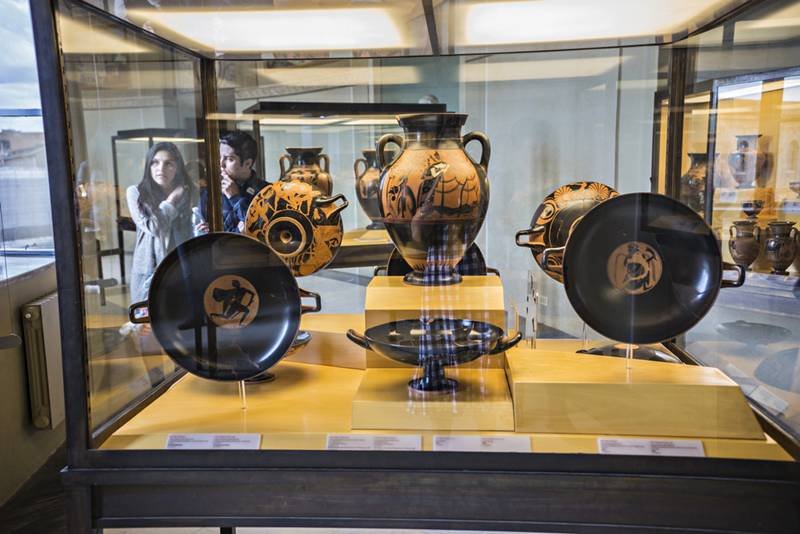The Gregorian Etruscan Museum is one of the treasures of the Vatican Museums, dedicated to the enigmatic and influential Etruscan civilization. Established in 1837 by Pope Gregory XVI, it is one of the earliest collections to focus exclusively on Etruscan artifacts. The museum showcases the cultural, artistic, and spiritual achievements of the Etruscans, a pre-Roman civilization that thrived in central Italy and left a lasting impact on the Roman world.
About the Museum
The museum houses a rich collection of artifacts unearthed from ancient Etruscan tombs and cities, providing a fascinating insight into the daily life, rituals, and artistry of this mysterious people. Divided into multiple rooms, each section of the museum is meticulously curated to highlight various aspects of Etruscan culture. From intricate jewelry and pottery to statues and funerary objects, the Gregorian Etruscan Museum offers visitors a unique opportunity to explore the depth and complexity of this ancient civilization.
Highlights of the Collection
Among the most remarkable exhibits is the Mars of Todi, a life-sized bronze statue representing a warrior or deity, showcasing the Etruscans’ exceptional skill in metalwork. The museum also boasts an impressive collection of bucchero pottery, known for its distinctive black sheen and elegant shapes. Other highlights include intricately decorated sarcophagi, adorned with reliefs and inscriptions that reveal insights into Etruscan beliefs about the afterlife.
Additionally, visitors can marvel at the Regolini-Galassi Tomb artifacts, a spectacular collection of gold jewelry, ceremonial objects, and other treasures that highlight the wealth and artistry of Etruscan elites. These items provide a glimpse into the sophisticated craftsmanship and symbolic significance of Etruscan funerary practices.
Historical and Cultural Significance
The Gregorian Etruscan Museum is a testament to the Vatican’s dedication to preserving and studying ancient cultures. It highlights the importance of the Etruscans in shaping the cultural and artistic heritage of Italy, particularly their influence on Roman art, architecture, and religious practices. By exploring this collection, visitors gain a deeper understanding of how the Etruscans bridged the gap between the Greek and Roman worlds, leaving an enduring legacy.
Where to See It
The Gregorian Etruscan Museum is part of the Vatican Museums’ extensive network of galleries. Its atmospheric rooms, filled with rare artifacts and educational displays, transport visitors to the ancient cities and tombs of Etruria, making it a must-see for history enthusiasts and art lovers.
Visitor Tips
To make the most of your visit, plan to spend extra time in the Gregorian Etruscan Museum, as the intricate details of the artifacts warrant close observation. Guided tours or audio guides are highly recommended to gain deeper insights into the Etruscan civilization and its role in shaping the ancient Mediterranean world. This museum is a fascinating window into a lesser-known yet profoundly influential culture, enriching your Vatican experience.

